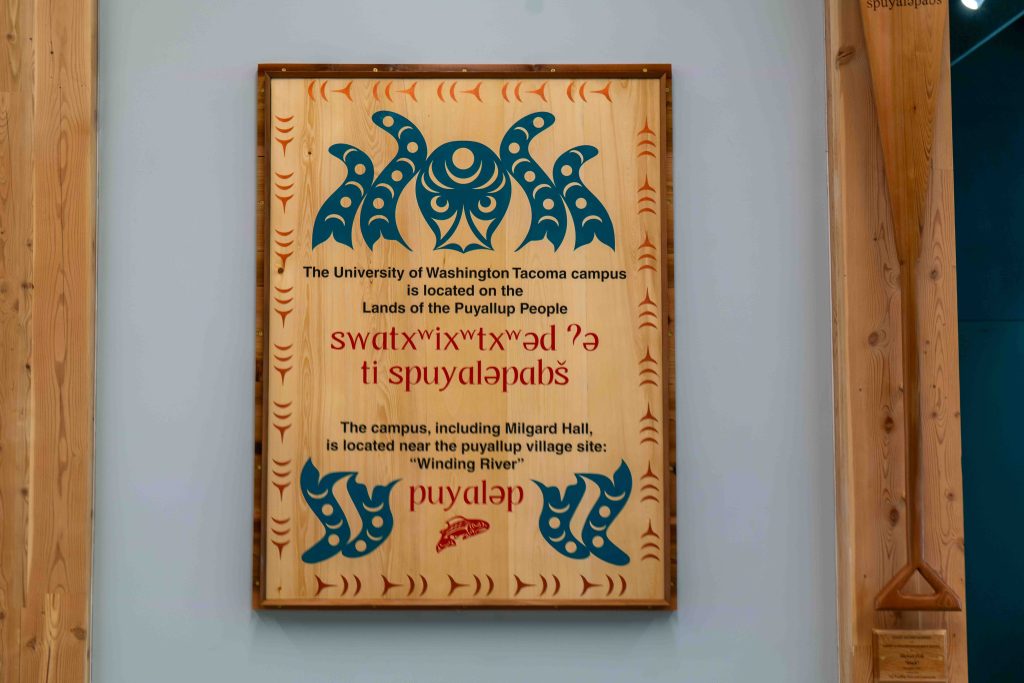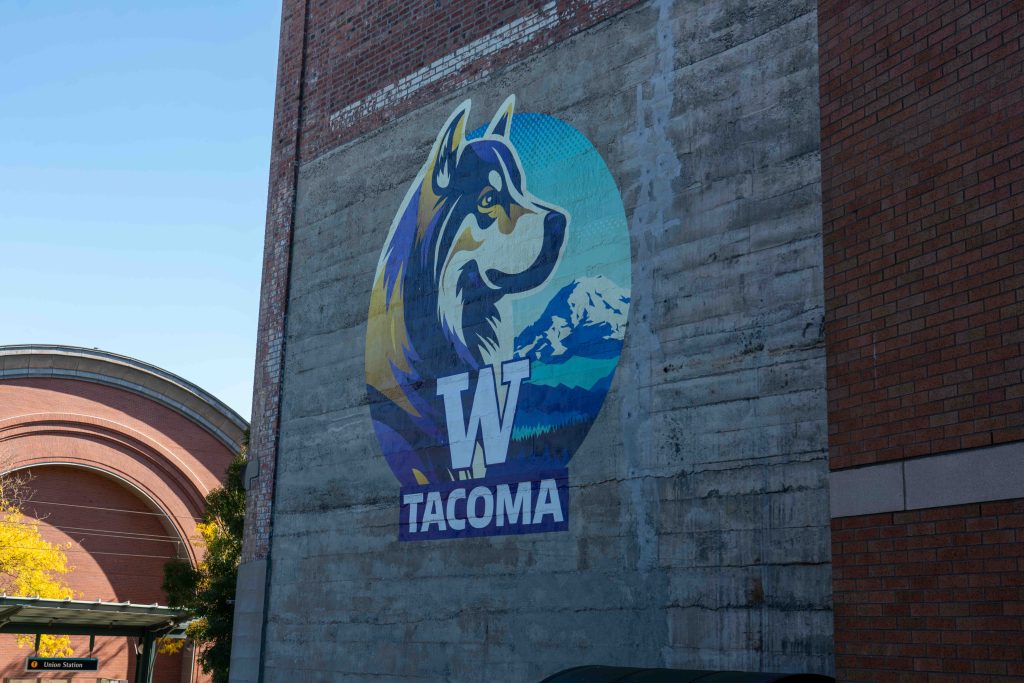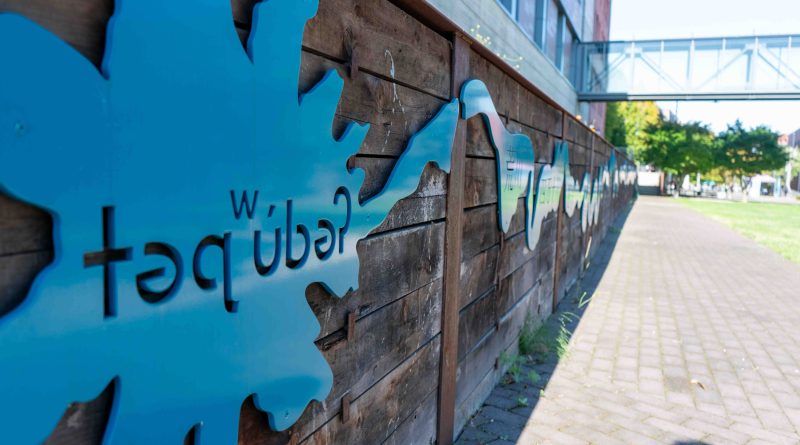Reflecting on land acknowledgements on Indigenous Peoples Day
Acknowledging our history is a great first step towards creating change, but it shouldn’t be the last.
When I first started seeing and hearing land acknowledgements a few years ago—at the beginning of college classes or social justice-themed events—it seemed like such an important step toward reparations for Indigenous people. The widespread application of these acknowledgements in classrooms, events and venues across the country normalized a conversation that Indigenous people have been having for decades.
Yet today, I find my mind wandering when these slides come up at the beginning of a presentation. It’s not that I don’t care, it’s just that I have heard these same sentiments expressed, often in the same exact jargon, dozens of times. I find myself thinking, “Yes, we are on stolen land. So what are we going to do about it besides acknowledging it?”
If you’ve yet to have a professor start off their class with a land acknowledgement, here is an excerpt from UWT’s Office of Equity and Inclusion:
“We recognize that all of us at UW Tacoma learn, live, and work on or near the ancestral homeland of the Coast Salish people. In particular, our campus is situated on the traditional territory of the Puyallup. And, since we’re gathered virtually, we also want to acknowledge the lands of the Muckleshoot, Nisqually, Suquamish, Duwamish, and all other traditional lands we may be on.”

I realize that land acknowledgements are not meant to represent a be-all, end-all solution to the aftermath of the genocide and displacement of Indigenous peoples. It’s in the name that it is simply meant to acknowledge the truth about our history.
But oftentimes, these statements feel like an easy way for institutions to continue to get away with occupying stolen land, without having to make any material changes. I do not harbor any resentment or ill feelings towards the concept of land acknowledgement itself, but towards the institutions which take advantage of it.
Indigenous writer Nick Martin elaborated on this problem in 2020, when director Taika Waititi’s land acknowledgement during the Academy Awards ceremony catalyzed a more mainstream conversation about the concept. While he praised Waititi for making such a statement in a room of majority-white, ultra-wealthy people, the audience’s enthusiasm towards the statement created a sort of dissonance for some Indigenous viewers.
“This is Native land, it seems to say, and yet here the colonizers are all the same,” wrote Martin. “The real problem is that we never left. We still live on these lands. Failing to take the next logical step—calling for the strengthening of sovereignty and investment in Native voices—is a choice.”
Martin’s criticism is mainly focused on Hollywood and its history of excluding Indigenous creatives, while allowing white filmmakers to whitewash Indigenous stories. But the lesson he imparts can be applied to any industry or institution: acknowledgements without further meaningful action are hollow.
Though UWT has yet to return any land ownership rights to the Puyallup tribe, the university has started initiatives to promote Indigenous voices and create more academic and professional opportunities for Indigenous people. These include the Native American Indigenous Education Symposium, Building Excellence through Science and Tradition (BEST), and Indigenous Knowledge and Community Conversations.
These “investment[s] in Native voices,” as Martin put it, sound pretty substantial. However, their webpages are not up to date, so it is difficult for the average student to learn whether these initiatives are ongoing and how to get involved.
The university has also commissioned several displays relating to local Indigenous people. “All the Rivers in the World” is an installation by Seattle artist Vaughn Bell along Prairie Line Trail. It begins with the Lushooteed word for Tahoma (the original name of Mt. Rainier) and ends at the staircase with the Lushootseed word for Puyallup, with various rivers of the world chosen by UWT students in between. The informational displays within Milgard Hall provide basic knowledge about local Indigenous groups.
Sadly, a mural on the side of the Walsh Gardner building that featured Lushootseed was covered up at some point over the summer for unknown reasons. Perhaps it was always intended to be temporary, but the university should not take the impacts of decisions such as this lightly. A student who might have felt welcomed by that mural last year would likely be dismayed to see it has been replaced with a more generic, UWT-themed piece.

We cannot depend on institutions to make the changes we need, as they won’t do so until we put sufficient pressure on them. It is up to us to unite for collective efforts and take individual actions that contribute to a greater shift.
Professors, activists and event facilitators can make land acknowledgements more meaningful by extending the conversation to include what further steps can be taken. Direct students towards resources where they can learn more about the history and traditions of the area’s tribes, such as the Puyallup tribe’s informative website. Talk to attendees about the Land Back movement, through which Indigenous peoples across the US and Canada and their allies are advocating to reestablish Indigenous sovereignty. Bring attention to the crisis of and movement for justice for Missing and Murdered Indigenous Women.
Professors should also try to find ways to include Indigenous history, tradition, knowledge and activism into their curriculum. Last spring, Dr. Cassie Miura did so seamlessly in her Writing for Social Change course (TWRT 388). In the class, students examined different genres of persuasive writing through the lens of Indigenous issues. By digging deep into academic writing and poetry about the Indigenous Hawaiian struggle to protect Mauna Kea, my classmates and I built our rhetorical skills while also gaining a deeper understanding of the importance of Indigenous sovereignty.
I believe that, if UWT (and any other institution, for that matter) is serious about following through with the stated purpose of land acknowledgements, it needs to do more as an institution to make reparations to local Indigenous communities. Meanwhile, students and faculty who are passionate about this issue should make their voices heard: attend campus Town Hall events (the next one is October 30), bring it up in class discussions, and write to the Ledger to let us know your thoughts.
Land acknowledgements are a contentious issue for Indigenous activists, but many agree they can be a good first step. The problem is when they are the only step.



